When choosing the best type of metal for your laser cut project, there are a lot of things to take into consideration – weight, aesthetic, durability, strength, etc. Whether you’re designing a sign for your business or planning a product launch with laser cut parts, you’ll need to make an educated choice in the material you use.
SendCutSend uses the highest quality materials, and we want to help you get the most out of them. This guide walks you through some of the most popular materials we offer and what value they can bring to your projects, no matter what they are.
Stainless Steel
Created with corrosion resistance in mind, stainless steel is a versatile, balanced metal that perfectly suits a number of projects. Stainless steel is made corrosion resistant through the addition of chromium to the traditional iron and carbon alloys found in steel. Chromium allows the surface of the metal to oxidize naturally, thereby protecting the steel from most weathering and further unwanted oxidation after being laser cut. The unique blend of alloying elements also gives laser cut stainless steel parts a sleek finish that can be easily improved upon by further finishing processes.
Stainless steel lends itself to highly corrosive or high stress environments, such as marine and aerospace applications. It’s also commonly used in construction, kitchen appliances and cookware, and by the medical industry. Here at SendCutSend, we offer both 304 stainless steel and 316 stainless steel for our steel laser cutting service.
Benefits of laser cut 316 stainless steel:
- High nickel and chromium content
- Lower carbon count than other stainless steels
- Corrosion resistant and ideal for outdoor projects
- Durable
- Cost effective
- Stress and impact resistant
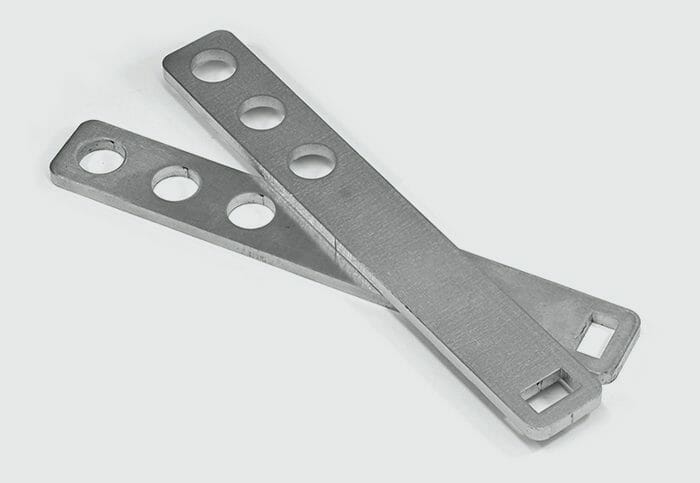
Benefits of laser cut 304 stainless steel
- Versatile and easy to work with
- Weldable and ideal for custom structural products
- Oxidation resistant
- Easy to sanitize
- Cost effective
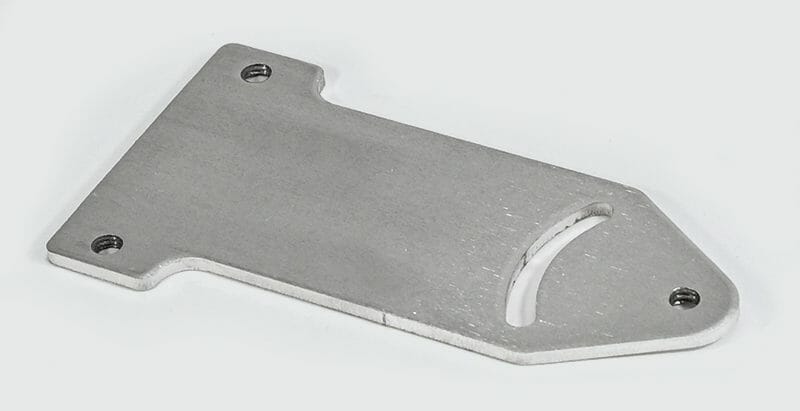
Aluminum
Laser cut aluminum is lightweight, durable, and affordable. It’s the go-to metal in countless industries for its versatility. Easy to work with but boasting high fatigue strength, SendCutSend’s laser cut aluminum alloys will suit almost any of your projects, from car restorations and robotics engineering to custom product lines for your own customers. SendCutSend currently offers 5052, 6061, and 7075 aluminum.
Benefits of laser cut 5052 aluminum
- Easy to work with
- Malleable
- Durable
- Lightweight
- Perfect for prototypes and general use products (e.g.- brackets, hinges)
- Takes to finishing processes well
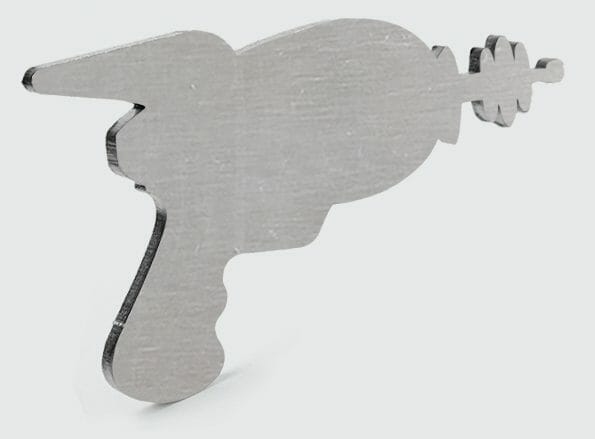
Benefits of laser cut 6061 aluminum
- Stronger than 5052
- Malleable
- Impact resistant
- Heat treated for further strengthening

Benefits of laser cut 7075 aluminum
- Strongest of the three offered alloys
- Double the tensile strength
- Lightweight
- High strength-to-weight ratio

Copper
Copper combines functionality with aesthetics. Because of this, laser cut copper can be found in everything from wall art to battery busplates. It’s conductive, non-corrosive, and malleable, lending itself to usage in numerous industries.
SendCutSend offers laser cut C110 copper, which is classified as electrolytic copper. (Meaning our copper is 99.9% pure.) This makes it especially ideal for electrical projects because there are essentially no other elements to interfere with the copper’s conductive properties.
Copper can be brushed, oiled, or patinated, but also looks stunning when left as it is.
Summarized benefits of laser cut copper:
- Highly conductive
- Highest possible purity
- Malleable
- No additional finishing needed
- Antimicrobial

Brass
Brass is a copper-zinc alloy, making most of its uses very similar to the applications for copper. The addition of zinc allows brass to have a low friction point, meaning it prevents sparks. This lends brass to many functional applications such as locks, hinges, and bushings.
SendCutSend offers 260 series H02 brass for our brass cutting service. 260 series H02 brass is malleable, weldable, and easily soldered. While it is often used in ornamental applications, these qualities ensure that brass is a valuable metal in many electrical and functional products as well.
Summarized benefits of laser cut brass:
- Aesthetic
- Malleable
- Weldable
- Easily soldered
- Low friction point
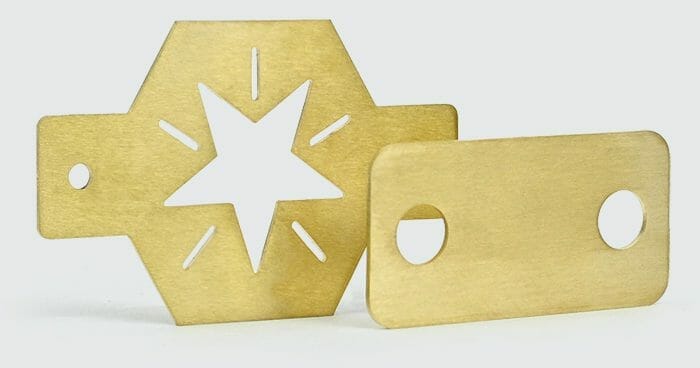
Mild Steel
As we’ve stated, steel is an alloy composed of iron and carbon. SendCutSend’s laser cut A36 and 1008 mild steel is strong, durable, and weldable. We offer Mild Steel in three surface finishes:
- Cold Rolled Carbon Steel (1008)
- Hot Rolled Carbon Steel (A36)
- Hot Rolled Pickled and Oiled Carbon Steel (HRP&O) (A36)
Hot Rolled Carbon Steel (A36)
Hot rolled steel is created when the steel is rolled at high temperatures (>1700˚F). The steel is then cooled at room temperature, which normalizes the material and prevents internal or microscopic stresses from forming.
Hot rolled carbon steel is easily welded, and works well in structural applications where strength is needed and an aesthetic finish is less of a concern.
Summarized benefits of laser cut hot rolled carbon steel:
- Durable
- Easily welded
- Strong
- Cost effective

Hot Rolled Pickled and Oiled (HRP&O) Steel (A36)
Hot rolled pickled and oiled carbon steel goes through the exact same processing as mill finished hot rolled carbon steel. The only difference between the two is the finishing process. HRP&O carbon steel is soaked in an acid bath post-rolling in order to remove some of the scaling left behind from the cooling process. It’s then covered with dry oil to give the steel a protective coating, preventing rust.
HRP&O carbon steel has all the same benefits of hot rolled carbon steel, but with a smoother finish.
Summarized benefits of laser cut HRP&O carbon steel:
- Durable
- Easily welded
- Strong
- Smooth finish
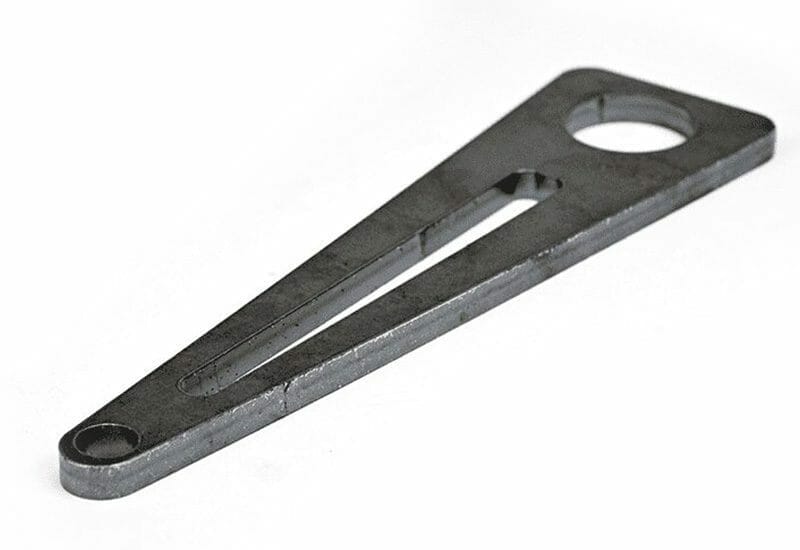
Cold Rolled Carbon Steel (1008)
Cold rolled carbon steel is hot rolled first, and then allowed to cool to room temperature. It differs from hot rolled steel because it’s then re-rolled at room temperature to achieve a smoother and more precise finish.
Because it’s work hardened, cold rolled carbon steel is stronger and more durable than hot rolled steel. This also allows cold rolled steel to be better suited for bending and fabrication than other mild steel finishes. Although these additional values add to the cost, the end result is worth it.
Summarized benefits of laser cut cold rolled carbon steel:
- Strong
- Easily welded
- Aesthetic finish
- Deformation and tension resistant
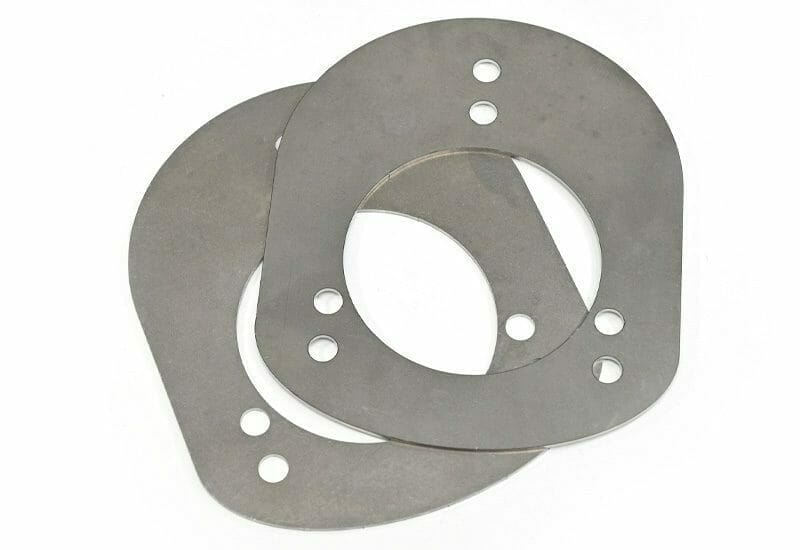
The best type of metal for your laser cut project
This is just an introduction to a few of SendCutSend’s high quality materials available for laser cutting. To learn more, check out all our materials – metals, plastics, composites, and wood – and find what will work best for your project.
When you’re ready, upload your design and get instant pricing today!





